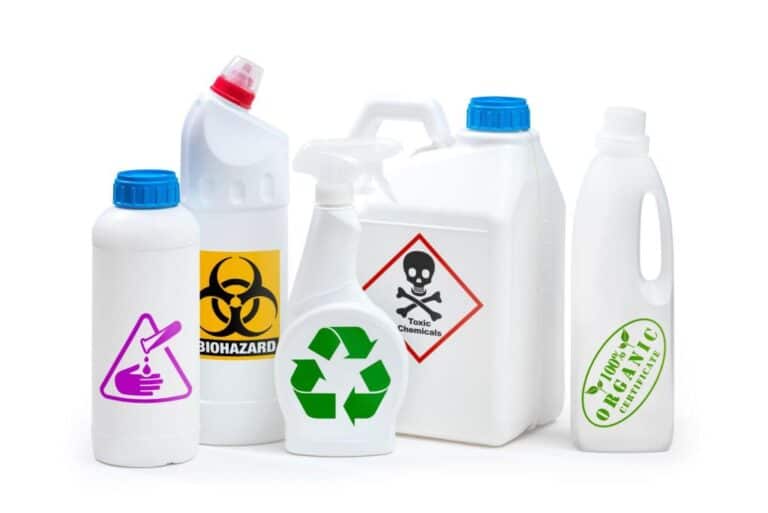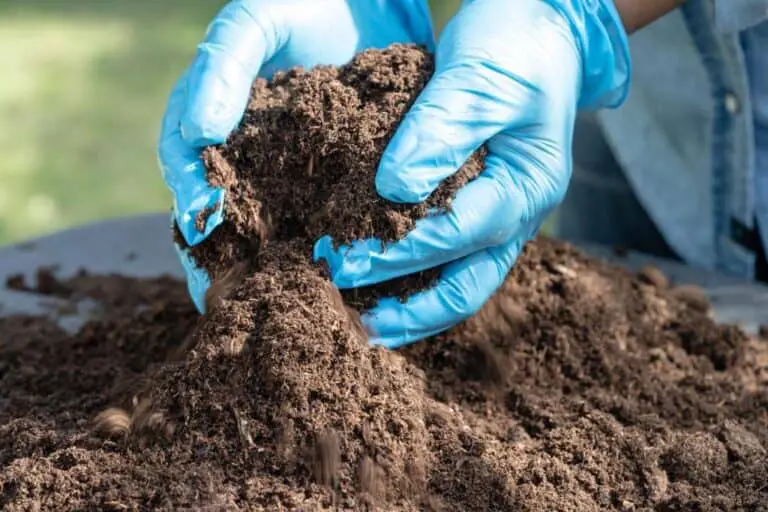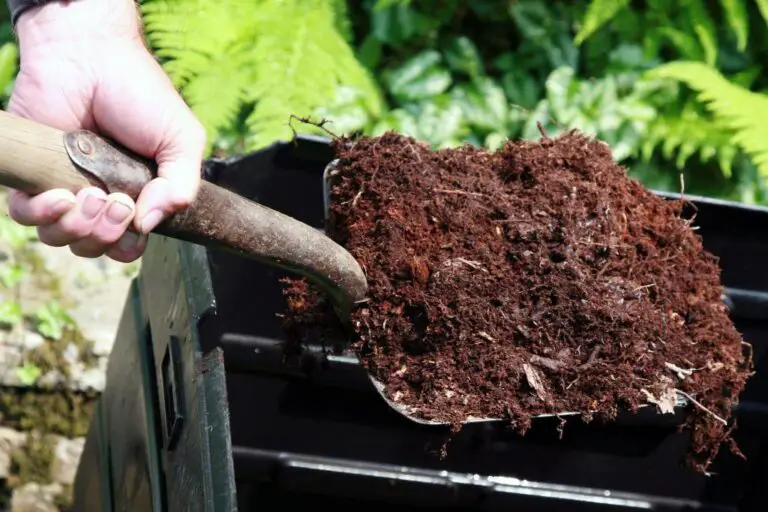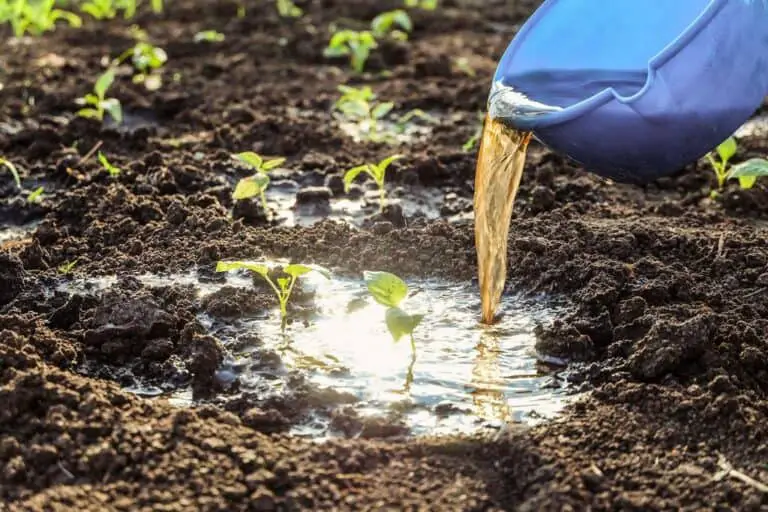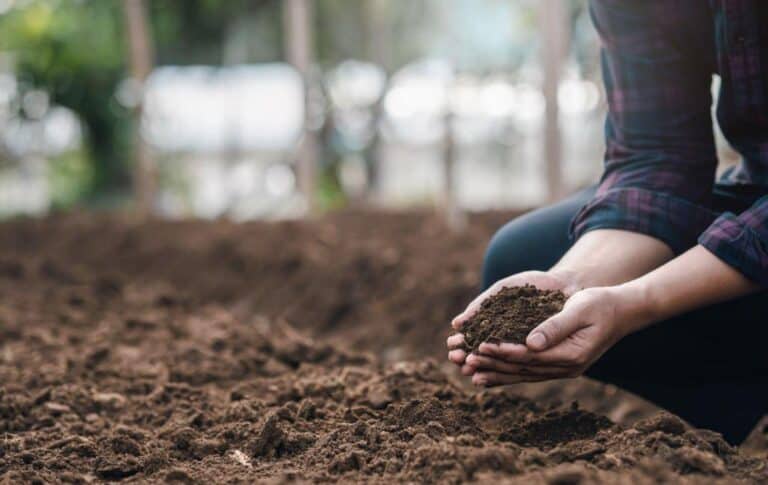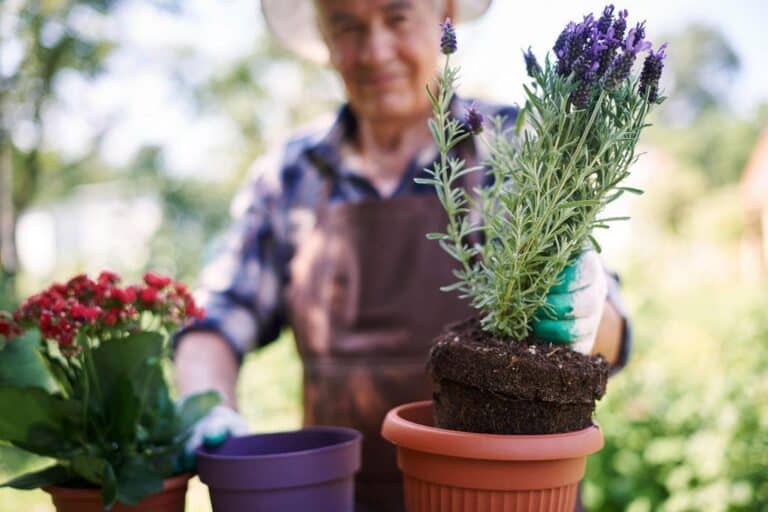Topsoil Loss and Replacement: How to Restore Topsoil Easily?
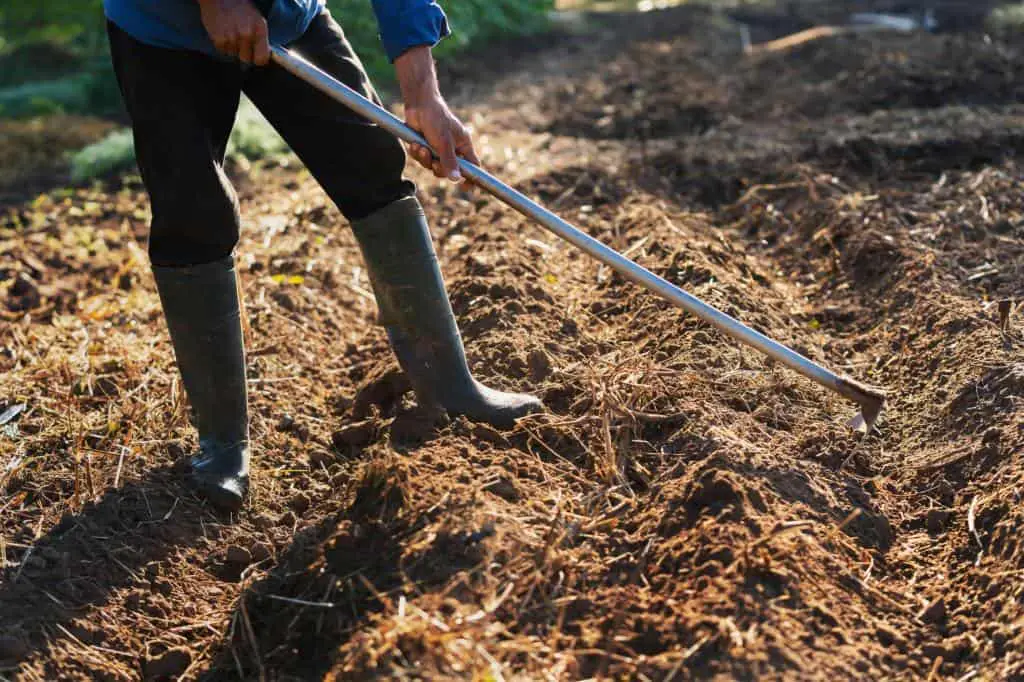
In the world of agriculture, where the success of crops is paramount, a hidden hero plays a pivotal role: topsoil. This thin layer of earth, often taken for granted, is the lifeblood of sustainable farming.
However, it is under constant threat from various forces, leaving farmers and scientists alike wondering: Is there a simple and easy solution to combat topsoil loss? In this comprehensive exploration, we’ll delve into the importance of topsoil, the consequences of its loss, and both traditional and modern methods for its replacement.
Picture a flourishing field of crops, a garden bursting with colorful blooms, or a pristine forest teeming with life. Now imagine these vibrant landscapes slowly losing their vitality, their very essence seeping away. Topsoil loss is more than just soil disappearing; it’s a silent catastrophe with ripple effects on everything we hold dear.
But fear not, for in this article, we embark on a journey of discovery. We’ll unravel the causes behind topsoil erosion, explore its dire consequences, and delve into potential solutions. Is there a straightforward path to restoring what we’ve lost? Let’s find out together.
Introduction to Topsoil Loss and Its Causes
To grasp the gravity of topsoil loss, we first need to understand what topsoil is. It’s the uppermost layer of soil, typically the first 2 to 8 inches deep, rich in organic matter and nutrients. This fertile layer is a crucial substrate for plant growth and supports the vast majority of agricultural activities.
Unfortunately, this invaluable resource is under siege. One of the main culprits is erosion, which is a result of factors like wind and water. Land degradation, often a result of poor land management practices, further exacerbates the problem. These combined forces strip away the topsoil layer, leaving farms vulnerable.
Excessive use of fertilizers and pesticides can harm the delicate balance of microorganisms in the soil, depleting its fertility. Growing the same crop repeatedly in the same soil depletes specific nutrients, rendering the soil less productive over time.
The importance of tackling topsoil loss cannot be overstated. It affects not only farmers but the global population. Sustainable agriculture, which relies on healthy topsoil, is essential to ensuring food security and environmental stability for future generations. With this understanding, let’s dive into the consequences of topsoil loss.
Consequences of Topsoil Loss
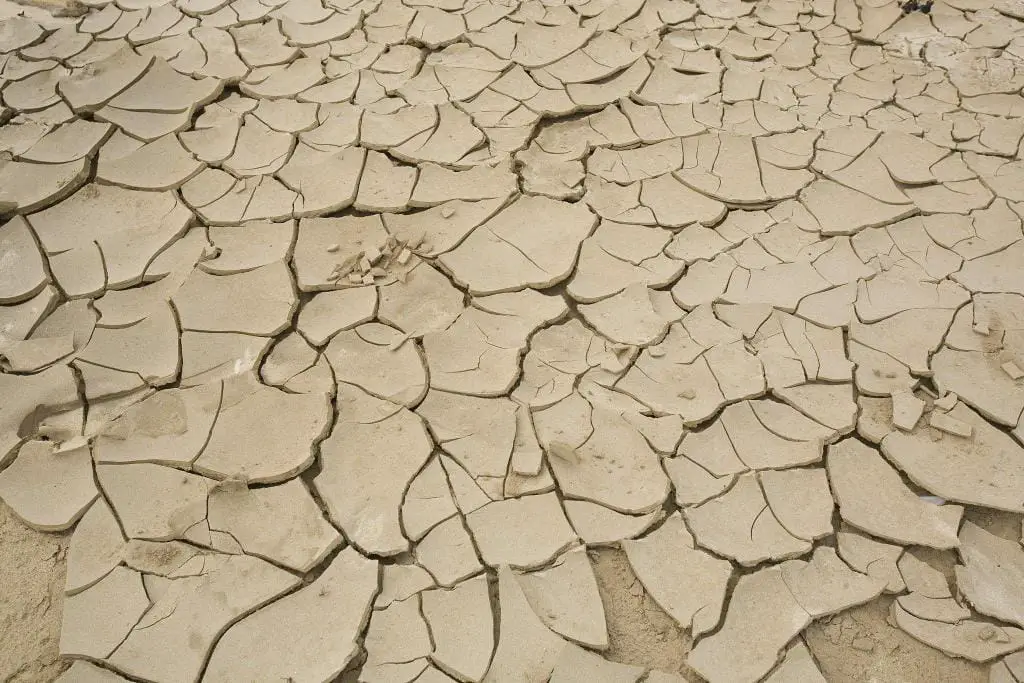
The consequences of topsoil loss are far-reaching and impact both the environment and human livelihoods. Without the protective layer of topsoil, soil degradation becomes a looming threat, leading to reduced soil fertility. This, in turn, hampers the growth of vegetation and disrupts ecosystems. The consequences ripple through the food chain, affecting wildlife and contributing to habitat loss and biodiversity decline.
1. Reduced Crop Yields
As topsoil becomes thinner and less fertile, crop yields decrease, leading to potential food shortages and rising prices. Reduced yields can lead to food scarcity and increased prices, affecting both farmers and consumers.
2. Water Pollution
Eroded topsoil can carry chemicals and pollutants into water bodies, contaminating them and harming aquatic ecosystems.
3. Increased Erosion
Loss of topsoil exacerbates erosion, creating a vicious cycle that further degrades the land.
4. Biodiversity Decline
Reduced soil quality can disrupt ecosystems, leading to a decline in plant and animal species.
5. Economic Costs
The economic toll of topsoil degradation is significant. It includes not only the immediate loss of crop yields but also the expenses associated with soil erosion control and restoration efforts. In essence, topsoil loss affects both the profitability of farms and the global economy.
Solutions for Topsoil Restoration
Restoring topsoil is a complex challenge, but several strategies can help mitigate its loss and promote its regeneration.
1. Crop Rotation
One effective strategy in the battle against topsoil depletion is crop rotation. This practice involves alternating the types of crops grown in a particular field over different seasons. The beauty of crop rotation lies in its ability to maintain soil health and fertility. Different plants have varying nutrient needs and interact differently with soil microorganisms.
By rotating crops, farmers can prevent the excessive depletion of specific nutrients while fostering a balanced, nutrient-rich soil environment. For example, legumes like beans and peas can fix nitrogen into the soil, benefiting subsequent crops that require this essential nutrient.
2. Cover Crops
Another valuable technique is cover cropping. Farmers plant cover crops like rye or clover during non-growing seasons to protect the soil from wind and rain erosion. These cover crops also contribute organic matter when they decompose, enhancing soil structure and fertility.
Furthermore, their roots aid in stabilizing the topsoil and preventing water runoff from removing it. The combination of these benefits makes cover cropping an essential component of topsoil preservation.
3. Reduced Tillage
Reducing tillage is a key aspect of sustainable farming. Excessive tilling disrupts the topsoil, making it more susceptible to erosion. By minimizing this disturbance, farmers can maintain the structure and integrity of the soil.
No-till or reduced-till methods leave crop residues on the field, acting as a protective layer against erosion. This approach not only helps conserve topsoil but also reduces the need for fuel and machinery, making it both environmentally and economically beneficial.
4. Composting
Adding organic matter through composting improves soil structure and fertility. Composting involves the decomposition of organic materials like kitchen scraps, yard waste, and leaves. As these materials break down, they release valuable nutrients like nitrogen, phosphorus, and potassium into the compost. When mixed with existing soil, this nutrient-rich compost acts as a natural fertilizer, providing essential elements for plant growth.
5. Soil Conservation Techniques
Implementing terracing, contour farming, and buffer strips can prevent erosion and protect topsoil.
6. Afforestation
Planting trees and restoring forests can stabilize soil and prevent erosion.
7. Urban Planning
In urban areas, proper land-use planning can preserve fertile land and encourage sustainable practices.
With these promising solutions in mind, it’s clear that there’s hope in the fight against topsoil loss. But is the path forward as straightforward as it seems? In the next sections, we’ll explore the challenges and barriers to topsoil restoration, as well as the role of technology and sustainable practices.
Read: Can I Use Topsoil Instead of Mulch as Replacement?
Is There a Simple and Easy Topsoil Restoration Solution?
Topsoil restoration is a complex challenge, and there’s no one-size-fits-all solution. Instead, it demands a multifaceted approach, customized to the unique conditions of each region.
Imagine a scenario where a farmer adopts a combination of sustainable farming practices. Crop rotation, for instance, involves alternating different crops in the same field to improve soil fertility and reduce pests. Reduced tillage minimizes soil disturbance, helping preserve the topsoil’s structure. Cover cropping involves planting specific crops during non-growing seasons to prevent erosion and enrich the soil. Together, these practices create a harmonious ecosystem that prevents topsoil depletion, fosters soil health, and gradually increases crop yields.
While such practices show promise, it’s important to remember that topsoil restoration is a long-term endeavor. It requires dedication, education, and resources, but the rewards are bountiful – safeguarding our topsoil ensures a sustainable future for agriculture and the environment alike.
Conclusion
Topsoil loss is a pressing issue with far-reaching consequences, affecting our food supply and the environment. While there may not be a one-size-fits-all solution, a combination of sustainable practices can help restore and protect this vital resource.
To address topsoil loss effectively, we must embrace a collective effort involving farmers, policymakers, and individuals alike. By understanding the causes, consequences, and available solutions, we can take meaningful steps toward safeguarding our topsoil for future generations.
FAQs on How to Restore Topsoil Easily
What are the main causes of topsoil loss?
The main causes of topsoil loss include erosion from wind and water, deforestation, overuse of chemicals like fertilizers and pesticides, monoculture farming, and urbanization.
How does topsoil loss affect crop production?
Topsoil loss negatively affects crop production by reducing soil fertility and water-holding capacity, leading to decreased yields and potential food shortages.
What are the best practices for topsoil restoration?
Best practices for topsoil restoration include crop rotation, cover cropping, reduced tillage, composting, soil conservation techniques like terracing, afforestation, and proper urban planning.
Why is topsoil loss a significant concern for agriculture?
Topsoil loss is a significant concern for agriculture because it directly impacts crop productivity and food security.
Can topsoil loss be reversed completely, or is it irreversible?
While complete reversal is challenging, modern techniques can significantly restore topsoil health over several years or decades.
How long does it take to restore topsoil using modern techniques?
Restoration times vary but typically take several years, depending on the severity of topsoil degradation and the effectiveness of chosen techniques.

